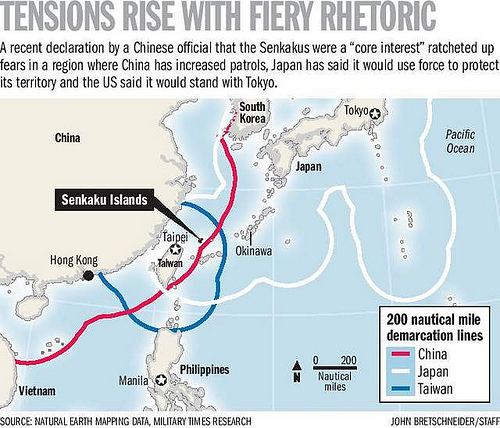How Did Western Powers Control Trade With China
The pragmatism that governed US-China trade for much of its historythe same attitude that endeared many Chinese and American merchants to each other when they first met in Cantonhas waned. The Opium War and these treaties were emblematic of an era in which Western powers tried to gain.

Pin On His 112 Imperial Japan Project
And China almost two years into a trade war featuring billions of dollars in tariffs on one anothers goods the coronavirus has made clear just how intertwined their.

. Some analysts have expressed alarm at the growing level of Chinese trade loans and investment in Latin America often on favorable terms with less. Following the First Opium War in the 1840s the Western powers concluded a series of treaties with China in an effort to open its lucrative markets to Western trade. Politically the result is less ambiguous.
It was in the 16th century that the Europeans were attracted towards China and the first arrival of the Portuguese traders in China opened a new chapter in Chinese history. China did not conform to democracy in the way the United States had hoped. They had come by way of the Indian Ocean after skirting the continent of Africa.
The British in particular had large amounts of Opium available to them in India. The drive to modernize the economy that began in 1978 required a sharp acceleration in commodity flows and greatly improved efficiency in economic. A rapid rise in living standards in China has helped legitimize and strengthen the Chinese Communist Partys power.
In 2001 Americans imported 102. The use of this sea route. China today is Americas fourth largest trading partner.
China surpassed Germany to become the worlds largest exporter in 2009. From practically nothing in 1980 two way US-China trade grew to more than 120 billion in 2001. Since the 1760s all trade with Western nations had been conducted at Guangzhou through a set group of Chinese merchants with official licenses to trade.
The Opium Wars forced the Chinese to open Chinese Ports to Western Governments and made the trade in Opium legal. The Second Opium War the United States and the Treaty of Tianjin 18571859. How did Western powers control trade with China.
Figuring out how to deter China or in the event of war in the western Pacific defeat it. It served as an American counterpart to the Anglo-Chinese Treaty of Nanjing that ended the First Opium War in 1842. From a Western point of view the policy of economic engagement with China has failed.
How did Western market-orientated property-owning liberal democracies go from being in a position of complete global. President Clinton signs the US-China Relations Act of 2000 in October granting Beijing permanent normal trade relations with the. The fall of the Qing in 1911-12 was the result of a series of body blows to Chinas power key among them the Boxer Rebellion of 1899-1900 a foreign relations blunder for the Qing which incited it by blaming flood and famine in North China on Western rail and telegraph lines that were disrupting the regions fengshui.
The Treaty of Wangxia Wang-hsia was the first formal treaty signed between the United States and China in 1844. This worked well in preventing any single Western power from gaining dominant leverage over China but it also invited competition among dynamic European states that in the long run were damaging to. Even in the face of defeat the Qing made conscious decisions to play Western powers against one another in the contest for Chinese favors and access to the China market.
They divided China into spheres of influence. In the 1850s the United States and the European powers grew increasingly dissatisfied with both the terms of. Military increasingly has one overriding preoccupation.
The British would then get expensive Chinese manufactured goods and other produces like tea cheaply and sell them. But even with the US. From then on other nations more and more refused to treat the Chinese as equals and China became shackled.
After the rebellion was suppressed by foreign intervention the. Wherever the Portuguese made landfall in Asia the Chinese had already. Trade is a key factor of the economy of ChinaIn the three decades following the formation of the Communist Chinese state in 1949 Chinas trade institutions at first developed into a partially modern but somewhat inefficient system.
Munist China has emerged as a great power in contemporary affairs. However over time the rise of the slave trade left Portugal over-extended and vulnerable to competition from other Western European powers. Defeated in the Opium War China was forced to recognize the Western nations as equals and to open her markets to Western merchants.
They colonized different territories. The Signing of the Treaty of Nanjing in 1842. From 1500 Europes autonomous cities nations and corporations increased exploration and colonization for money and power while at the same time China closed itself off in.
The Chinese had made it illegal before. In the 1880s says Perdue during a moment of Chinese backlash against foreign interference a prominent Canton merchant came out with a best-selling polemic. Trade in goods between the United States and China increased from less than 100 billion in 1999 to 558 billion in 2019.
The lucrative trade was vastly expanded when the Portuguese began to export slaves from Africa in 1541. Zheng He for example wished to impress the world with Chinese power but didnt seek to dominate the region and its trade. Some residents of the American colonies had engaged in the China trade before this time but this journey marked the new nations entrance into the lucrative China trade in tea porcelain and.
Envious of Portugals control of trade routes other Western European nationsmainly the. The Opening to China Part II.

European Colonisation In Southeast Asia 1792 1860 1 602px 1 506px Asia Map Map History Geography

No comments for "How Did Western Powers Control Trade With China"
Post a Comment